There are many ways to try and define abstract art. Pretty much every composition that’s not based on something familiar to you can be considered abstract art, as it depict visuals with a certain degree of independence from what we know to be visual references.
What Is Abstract Art?
We can’t dive into examples of easy abstract painting projects without having a better image on what abstract art actually means. Born in the early 20th century, abstract art was a radical movement as it defied everything people knew about art up until that point. Today, this type of art is found everywhere around us, in two and three-dimensional pieces. The beauty of it is the freedom of expression, but also the fact that you can use just about any material and work on any surface.
Discussing abstract art is very tricky because, without the artist’s input, we could interpret even the world’s most famous painting in any way we want. This is why this type of art is considered to be amongst the most personal ones out there. Some of the world’s greatest abstract art paintings across history include Mark Rothko’s “Orange, Red, Yellow” (which was sold in May 2012 for $86,882,496) or Piet Mondrian’s “Broadway Boogie Woogie” (created way back in 1942).
Another reason why abstract paintings and this form of art, in general, have been so controversial is that people think anyone can do it because it’s just a bunch of gibberish. However, there is a high chance that people won’t try to tackle this form of art simply because they are afraid of it being judged or misinterpreted.
There are no universal rules to abstract paintings, which means that you should consider this as an opportunity and not be stuck on the idea that by doing abstract paintings, you’re actually drawing a bunch of nothings.
Types of Canvas
Works of art start with an empty canvas, which acts like a playground for your energy, thoughts, and imagination. Knowing which type of canvas to choose is important if you want your paintings to look amazing, so here is what you should know about the most common categories on the market:
- The cotton duck canvas is the most common type of all. It is also one of the cheapest, but available in a wide variety of weaves and weights. One common way to classify this type of canvas is depending on the weight of the surface texture. Think of the thread count that’s normally used to depict the quality of several bedding items. Much like in that case, canvases that are cheaper will have looser weaves and lighter weights. The reason why people normally pick cotton duck canvases is because of the weight.
- Linen, on the other hand, is considered to be superior to cotton. It doesn’t stretch that much and comes with stronger fibers. Because of its durability, a linen canvas is also less prone to mildew and mold. Needless to say, all of its qualities make linen a more expensive material, but one that you can also find in a variety of textures and weights.
While the above classification focuses on the type of material that’s used to make a canvas, you have to consider more than just the material. Another common way to label canvases depends on how the canvas is going to be used.
- Stretched canvases are more expensive, but they are convenient because they are delivered pre-stretched and primed, which means they are ready to be used straight out of the box.
- Canvas panels are a more cost-friendly version of the stretched canvas. They are usually made with wooden press board panels and heavy-duty cards, plus the canvas surface which is glued to one of these. Canvas panels will normally require a frame before you can hang them but they are usually thin, which means that you can use just about any type of frame.
- Canvas rolls are the cheapest alternative out of all the three, but it’s going to take some time and effort to prepare the surface for painting. That’s because you will have to stretch the fabric before you can use it. Artists that have been in the game for a while prefer canvas rolls because they have endless possibilities when it comes to customisation. They can cut the canvas to the size of their choice and get to play around with bars and frames to get exactly the results they want.
Types of Paint
Now that you know what types of canvas you’re bound to encounter when shopping, it’s time to shop for the right type of paint. Naturally, you have multiple choices here as well, so we’re going to define the characteristics of the different types of paint you can purchase and determine which ones are more suitable for canvas painting and which are the ones you want to skip.
- Acrylic paint is one of the best options for a canvas. It’s very easy to work with acrylic paint and it dries out pretty fast. You can use acrylic paint with a primed canvas. Thicker acrylics are the best choices for canvas, while thinner paint requires painting more layers to get a deeper and more vivid color.
- Oil paint is also a very good choice for people who want to learn how to paint on a canvas. Oil paint can either be water soluble or traditional, with both of these choices having a viscous texture that makes it a great choice for canvas painting. Oil paint can be applied on the canvas using a palette nike or a brush, but some people like to use oil pigment bars for easier application.
- Gouache is a type of paint that combines characteristics of watercolor and acrylic paint. It is made with color pigments that have been combined with binding agents and may have a solid white pigment. It’s quite mediocre when using it on a canvas because it has a heavier texture compared to watercolor, but not as heavy as acrylic. That means that you’re going to have to apply a thicker layer with minimal water when working on a canvas. Artists like to use gouache for a special technique that’s used to make smaller paintings.
- Latex paint is most likely used by some artists simply because of the idea that Picasso used house paint to make his masterpieces. At a more in-depth look, it turns out that house paint does a fairly good job when used on a primed canvas, as it tends to be quite opaque and comes at a very good price. However, the formula of these products isn’t designed to be used on a canvas, so it’s very likely that it won’t last forever.
- Tempera is probably the type of paint you think about when you picture third grade children drawing in class. Tempera has a formula based on pigment combined with water-soluble binder and, while it can be used on a canvas, it’s definitely not the most recommended option. Due to its thickness, it can easily drip when applied on the surface of the canvas. Add the fact that it doesn’t really last that much, and you’ve got an option that’s pretty mediocre as well.
- Watercolor is the worst choice when it comes to choosing a type of paint that works with a canvas. While beautiful, watercolor doesn’t dry properly on canvas, and it usually forms beads after being applied. You can use it to make fun effects, but it doesn’t really pose as a solid choice for creating works made entirely with this painting medium.
How to Arrange Abstract Art in Your Home
Certain design elements have become second nature in your home, such as carefully arranging the throw pillows on the sofa or determining which nooks could benefit from another plant. However, one skill that many struggle with is how to organize (and even pick) wall art like an expert.
Knowing what to get
Kate Hoffman, creator and CEO of Spacey Studios, advocates approaching this like you would clothing shopping. “Discovering, purchasing, and wearing your favorite fashion companies is similar to discovering, purchasing, and maintaining an art collection,” she explains. “Both art and fashion are modes of self-expression, style, and narrative.”
Begin your search for the ideal pieces by determining which room you’re designing, and then consider what vibe you’re going for here. Are you looking for an office that would energise or calm you? To create a lively or elegant atmosphere in your living room? To create a communal or personal atmosphere in your kitchen?
Experiment with layering
By overlaying pieces of varying sizes, you may add dimension. Suspend frames from pegs and stack smaller frames on top of bigger ones. Keep in mind that in order to deck your walls, you do not require a hammer and nails.
Arrange photo frames vertically on ledge shelf. This is the least invasive method of displaying artwork, as you do not even need to drill a hole on the wall to hang the artwork. Replace as regularly as desired.
Get art that matches
Choose artwork that complements the space’s other hues. While artwork may incorporate an additional accent color, it must fit within the overall color scheme. Consider the colors that run through your other furniture and decor when selecting artwork.
Plan out the positioning
Avoid the frustration associated with hanging and rehanging your paintings. Using painters’ tape, you can experiment with the positioning and arrangement of abstract wall art without damaging your wall.
Consider the available wall space and the room’s organization when determining where to hang abstract wall art in your home. When small items are crammed into an excessively big space, the parts appear to be lost. Allow space for people to take a step back and admire larger pieces.
How to Properly Hang Your Wall Art
Believe it or not, there’s art behind hanging art, and some people will actually screw it up. One of the best bits of advice is to hang whatever you want, in whatever size you want, but at 57′ inches on center.
The term “on center” refers to the fact that the artwork’s center is always 57 inches. The 57-inch standard corresponds to the average eye height for humans and is frequently utilized as a reference point in a variety of galleries and museums.
57 inches on center is typically much lower than most people hang their artwork naturally. People hold items excessively high, for some unknown reason.
Placing things at 57 inches also implies that your artwork will be in closer proximity to other aspects of your home, like lighting or furniture, and will thus “communicate” and have a stronger interaction with everything, which is a good thing.
The Art Behind Acrylic Paint
Acrylic paint is, without a doubt, the best paint to choose for wall art. When opting for acrylics, here is a list of quick tips that will help you make the best out of this potent resource:
- If your paint dries out very quickly, it’s probably because you’re not putting enough of it on your palette. Misting your palette regularly can also be of help.
- If you spray a little water across your canvas, the paintbrush will glide across more easily and it also means that you don’t have to add too much water on the paints on the palette.
- Avoid batch mixing colors. Instead, mix and match them separately.
- Use textures to build up layers. Layers will add depth to a painting and, even if the painting process is longer, it will have a nicer 3D look.
- Remember that choosing a brush to paint with is a personal choice and a brush that one artist likes might not be suitable for another. For starters, experiment with large, medium, and small brushes.
What Is the Best Paint for Wall Art?
Acrylic paints adhere well to virtually any surface. They are opaque and bright, and the higher-quality ones are even resistant to light and water. Even if you are a novice, choose your colors and brands carefully, as they do make a significant difference.
How to Choose a DIY Abstract Art Project for You
Choosing colors
Choose between acrylics and oil paints. Acrylics are odorless and simple to deal with because they dry quickly and may be painted over if a mistake is made. On the other hand, oils are rarely utilized because they dry slowly, smell bad, or prevent you from covering your mistakes with a coat of paint.
Acquire a color wheel. Simply put, a color wheel is a circular gadget that displays a spectrum of colors. It’s excellent for illustrating the link between color and it will teach you what works well together and what doesn’t.
Choosing tools
Select any brushes that you prefer to use with the paint you’ve previously chosen. Consider applying paint with a palette knife to create a textured effect. While some artists prefer to work on an easel, there are still plenty of people that love placing the canvas directly on the floor.
Choosing patterns
If you’re not sure about the pattern, painter’s tape can go a long way in helping you. Tape lines across the canvas at intersecting points. Place multiple lines of blue painter’s tape to create geometric forms such as squares and triangles.
The objective is to generate visuals that are not accurate representations of reality. The taped lines will aid in the painting process. If you use painter’s tape, the shapes and lines in your painting are clean and distinct.
Get inspired
Even abstract works of art begin with a concept. It is a prevalent misconception that abstract art is created by artists who are unable to draw, lack academic skills, or are simply spastic.
Being fun is the most revolutionary act you can take. To begin creating abstract artwork successfully, you have to be receptive to all the possibilities and paths that the piece may go. By doing so, you are allowing the process of creating something to dictate the end, rather than becoming excessively analytical and critical of your work.
Allow your analytical part of the brain to rest and attempt to connect with your instinctual, intuitive side. Make an effort not to overthink the final outcome and to be fully present while painting or drawing.
Take pleasure in the process as it guides you from one decision to the next. Distract yourself with music to help you avoid over-analytical thinking. Avoid self-bullying or self-criticism; instead, follow the work.
Match the decor
Abstract art does not have to shout for attention all the time. It’s always a good idea to stick to the colors that you already have in the room when looking to create artwork that quietly (and elegantly) complements the rest of the room’s decor. You may create an abstract painting with a background color that complements your walls, or you could select artwork that mimics the hue of your upholstery.
Amazing DIY Wall Art Inspiration and Ideas
1. DIY Wall Art
Creating abstract painting isn’t always easy because you need to be inspired by something to create art in general. Thankfully, there are plenty of source of inspiration all around us, such as this really cool tutorial on how to make wall art fast and hang it in order to make the walls look more interesting. What you will need for this project is black acrylic paint, a blank canvas, and a wide paintbrush. If you follow the steps, you will see that the painting process is pretty simple. It mostly involves correct positioning of the canvas and a few brushstrokes that will create some amazing visual effects once hung on the wall.
2. DIY Abstract Art
The thing with abstract art is that a lot of people argue that you don’t need talent for it because it can be interpreted in so many different ways and it depicts something that’s very different compared to reality as we know it. This tutorial will show you how to put together a quick wall painting by using just a few paintbrushes, some black, blue, yellow, red, and white acrylic paint, and a plastic painting drop cloth, some masking tape, and, of course, the canvas itself. The tutorial will teach how to combine the colors together to make a light-colored piece that inspires.
3. Paint & Dye Abstract Art
This tutorial explains it pretty clear how difficult it is to explain the process of creating an abstract painting. Even when trying to replicate it, no two results are the same when it comes to this type of art. The project in question uses acrylic paint, dye, a variety of paintbrushes, empty cups, and paper straws. The process we’re looking at will guide you through the main steps which imply creating the base, mixing the colors to make the streams, creating the daubs, and making the right blends so that you can end up with an abstract painting in beautiful shades of white and light blue.
4. DIY Black and White Spotted Art
Spotted paintings seem to be all the craze right now. So, if you find yourself with an empty wall and aren’t sure how to decorate it, a spotted painted made with your own two hands can look really cool and satisfying. This project was conceived as trying to imitate the print of a snow leopard. This idea is awesome for a variety of different situations and especially if you have other dotted or spotted décor elements in the room (like maybe some similar-looking throw pillows). You can use watercolors for this project and create spots of various depths for a more stunning visual effect.
5. Acrylic Paint Abstract Painting
There is a reason why art is considered therapy and this is proof of that. This is an example of a project that involves using black ink abstract art in the form of a marker pen. How does this work? Well, the artist in questions talk about using acrylic paint markers that have a felt tip which releases paint as you’re stroking it on the canvas. Ever since this blog pot was conceived, this type of marker became more popular and you probably heart about them already. The main point is that they are a viable tool for making your own abstract art, a piece that you can proudly hang on your walls.
6. Gold Leaf Art
You just have to love the combination of colors in this DIY painting. It honestly looks like something you would see hanging on the walls of a Parisian café. This project requires a canvas (as large as you want it to be), the use of some modeling paste, some off-white wall paint, and a little bit of glue. Before you apply the gold leaf to the painting, you are going to have to apply some glue on the canvas using a paintbrush. You can use acrylic paint and get really playful with warm colors even experiment with colder tones of blue and green.
7. Simple Abstract Art Painting Tutorial
As we suggested above, you can combine golden elements with cold shades of blue and the result will be a beautiful painting just like the one in this tutorial. The project doesn’t require a big investment to get started. You’re going to need a blank canvas, some wrapping paper, gold foil flakes, glue, acrylic paints, and brushes. As usual, the first step will be the application of the gold foil flakes, after which you will proceed with strokes of acrylic paint in different shades of blue combined together to create this gem.
8. Abstract Art for Beginners
Time to put those heavy-weight acrylic paint tubes to good use and experiment with different tones that you find appealing. This project uses brushes of different sizes to create even more uneven effects given by the different types of brush strokes. If you’re looking for less texture build-up, you can combine the paints with water. Keep in mind that oil-based paint will take longer to dry. In this example, the artist chose to paint with light-colored shades that make the room more bright and vivid.
9. Embroidered Abstract Canvas Wall Art
This is a more original idea and a more unique approach if you compare this project to the other DIY abstract painting tutorials we showed you so far. For this project, you are going to need a prestretched canvas, embroidery floss or craft thread, pencil, eraser, ruler, scissors, and a needle. You can get really playful when it comes to choosing the colors of the threads. You can go for similar tones or create a rainbow-like effect.
10. Geometric DIY Art
This is one of our most favorite DIY abstract crafts of the day and it involves creating a metallic-like canvas but, once again, there are so many different colors and options for you to experiment with. For instance, you can use gold spray paint or go crazy with some watercolors. You can use decorator’s tape to create the geometric design and then use paintbrushes to apply the colors. Make sure that you remove the tape carefully at the end, as to avoid smudges or paint cracks that might ruin your artwork.
11. DIY Constellation Art
A project that started out as an idea for a nursery could easily be hung in just about any room in the house because the result is simply astonishing. These constellation painting were made using watercolor paper, frames, different shades of blue watercolors, glue dots, gold leaf, a gold marker, some cardboard, and a bunch of other stuff that you most likely have around the house already. The contrast between the golden leafs applied on the paper and the hypnotizing shades of blue is just stunning.
12. DIY Diamond Ripple Wall Art
Geometrical abstract art with diamond patterns? Yes, please! It’s a simple project that requires some painter’s tape, some plywood, a few latex paint color, a knife, measuring tape, a pencil, a ruler, and some paintbrushes. The most complicated part about this tutorial will be placing the painter’s tape and trimming everything so that the pattern turns out just perfect. The rest of the project will be just painting and making sure that you carefully remove the tape when you’re done.
13. Fired Alcohol Ink Art
Here is a bold painting project if I ever saw one. It requires using an open flame, so be really careful with the materials that are around you as you embark on this mission. All you have to go is grab a picture frame, remove the glass, put a few drops of alcohol ink on the glass, pour some rubbing alcohol on top, swirl, and then set it on fire. When the flames are out, simply put the glass back in place, making sure there is white paper backing so that the colors and patterns are easier to see. The result will be an abstract design that can be as beautiful as the colors you choose for the project. It’s simple, cheap, and very effective.
14. DIY Abstract Artwork
This painting suggestion involves creating different layers of colors on a blank canvas without having a specific design or goal in mind. It’s mostly about improvising on the go, which can be an excellent form of therapy. It’s based on the idea that if you encounter parts of your painting that you don’t like, you can simply paint over them. It is a free-hand project that gives you more freedom to create things as you go.
15. Layered Abstract Wall Art
What we really loved about this particular project is how the artist chose to create a painting that matches the style and colors of the rug. This is the kind of combination that you’re looking for when you want a uniform interior design layout. Of course, that doesn’t always have to be the case, so it all depends on your momentary inspiration. The idea behind the project is to use thick paint to layer different brushstrokes and make it seem like someone threw a bunch of lively-colored fabrics on the wall. It just looks amazing.
16. Abstract Wall Mural
The beautiful thing about painting is that almost anything can be your canvas, including your bathroom wall. To create your very own abstract wall mural, you will need at least two different paint colors to create a gradient-like effect. You can use a variety of different brushes as part of the project (such as like an angle brush that will allow you to control the direction of the pain and help create sharp lines). The result is definitely something to be proud of.
17. Watercolor Abstract Triangles Art
Here is yet another geometry-inspired abstract work of art that allows you to improvise as you go, without the need to sketch out the outlines of the triangles first. However, if you feel you’re not good with improvising, you can always use a pencil and a ruler to first draw the outlines and then you can combine the watercolors as you go. Feel free to experiment with different hues and create a color scheme that you feel would be more suitable for your own needs.
18. Epoxy Resin Painting for Beginners
This galaxy-themed abstract painting uses epoxy as the main ingredients. The project requires that sand a piece of plywood, and then combines epoxy resin and assorted acrylic paints to achieve the same effect as the artist. After creating the perfect canvas and applying paint on it, you will also require a hair dryer to scatter the paint in order to create the asymmetrical and apparently messy visual effect. You can experiment with other colors, and choose blue paint instead of black.
19. DIY Abstract Canvas Art
If you’re looking for a seasonal piece of art to use in ordered to complete a display, you can always make one yourself instead of spending good money on it. You will need a canvas in the size of your choice, paint (this tutorial uses three paints: white and two shades of blue), and foam brushes. The idea is to cover the canvas with horizontal brush strokes to create an abstract piece of art in a single color with different shades.
20. Collage Nuancier
Well, this can’t exactly be called abstract considering that it is a collage project that recreates fruit in the most beautiful way possible, it is an idea that we wanted to show you because of how beautiful the end result may be. By using different color swatches, you can combines shades and hues to recreate whatever objects you want. This example uses different kinds of triangles to create fruit art, but you’re only limited by your imagination.
More cool canvas wall painting ideas
Agate-Inspired Artwork
If you too are inspired by the beauty of agate and malachite, here is a tutorial that will show you how to recreate these patterns using a canvas, some paint tubes (in the colors that are suitable for the pattern you wish to recreate), and a cardboard piece that’s used to spread the paint across the surface of the canvas. While this is a project for those who love to get their hands dirty, we feel it’s a wonderful way to spend a Saturday afternoon.
Simple Daisy Painting
Let’s face it: who doesn’t love to see daisies? They are the perfect symbol for warm days and depict the beauty of nature, so if you want a simple daisy painting, this tutorial will show you the easy steps to follow. What we love about this tutorial is that the step-by-step process is accompanied by photos and specific details that will teach you how to paint the petals, how much paint to use each time, and what brush strokes are recommended.
DIY Geometric Art
Making abstract geometric art is pretty easy, as you’re about to learn from this tutorial. The process itself is very simple and it requires a minimal investment. Pretty much all you’re going to need is the canvas, some painters tape, paint, and brushes (depending on the thickness of the lines and other details that you’re going to want to implement in the painting).
Thrift Canvas Art
Focused on creating cool artwork while saving as much money in the process as possible, this tutorial is all about teaching you how to do that. The project implies repainting over a canvas that you can purchase for next-to-nothing at a thrift store. Then, you get to splatter paint across the canvas, which is super fun (and quite messy), then add the message of your choice and enjoy!
More Geometric Artwork
Geometry is often a part of abstract painting, and the good news is pretty much anyone can have a go at this type of project. The project is extremely simple and requires a canvas, a ruler or something that can help you mark equal vertical lines, a pencil, something to draw 90-degree angles (like the corner of a card), and paint.
Pinwheel Painting
This pinwheel painting project can surely add a bunch of color to your room, depending on the colors that you choose to paint it in. It’s very simple to make as well, since you’ll mostly need a canvas, some painter’s tape to make the perfect triangles, some acrylic paint, and some brushes. You can check out the tutorial for yourself and see how cool the end results are!
Large Abstract Art
Here is a very interesting project that helps you create a large white abstract painting that could fit on any wall color and in almost every room of the house. As you can see in the video, what you’re going to need is a canvas, some wood filler, and some white acrylics. To make a piece this big, it’s best if you use a large paintbrush, but you can experiment with multiple brush sizes and see what you come up with.
Minimalist Textured Canvas
We loved this little project, but we do have to mention that it implies using more items than the ones we’ve looked at before. You’re going to need plaster of Paris or join compound, the paint of your choice, plastic scraper or a putty knife, container, gloves, and a paintbrush. The tutorial will show you exactly how to mix these ingredients together and how to apply the result to get an awesome-looking painting.
Easy Tapestry Wall Art
This particular project is mainly focused on showing you how to turn an abstract piece of fabric into wall art, mainly by knowing how to attach the fabric to a wooden frame that you can easily make by yourself. We loved this project because it’s very budget-oriented, so you can make your own by spending about $25.
Huge Canvas Wall Art
When you want to cover a large and empty wall, there’s nothing like a giant canvas with some abstract art to help you get it done. This affordable solution comes in the form of a Youtube video meant to show you just how easy it is for your average art enthusiast to make one of these. You’re going to need a large canvas, white and gray paint, a staple gun, wood bits to make the frame, nails, hammer, and a ladder to put this giant thing on the wall.
Marble Abstract Wall Art
You can’t really go wrong with marble art when you want to decorate the hallway, and making your own piece using the technique described in the video is a piece of cake! You will need some acrylic paint, some Floetrol, an empty recipient you can use to splatter the paint across the surface of the canvas, and an air can that helps spray air across the paint and gives it that nice marble look.
FAQ
How do you start an abstract art?
Make seven dots on your surface and begin linking them with colors, textures, and patterns, and any other mark that comes to mind. Begin using your non-dominant hand. With this strategy, you may be certain that you will receive some unexpected marks. You can always return once inspiration strikes.
What makes good abstract art?
Abstract paintings can also be analyzed in terms of their constituent artistic elements: space, texture, line, shape, color, and value. An abstract artist’s abilities are defined by their ability to maximize the visual impact of colors and textures while also creating a solid composition using these elements
What are the 6 elements of abstract art?
The 6 elements of abstract art are space, texture, line, shape, color, and value.
Conclusion
Much like other forms of art, abstract painting can be considered a form of therapy. The best part about trying to engage in your own abstract painting projects is that you don’t have to follow any rules of composition and there is no right or wrong way to do it. You can correct your mistakes with ease and you can add elements along the way. You can improvise with unique color combination and you can draw inspiration for everything around you.
The post 20 DIY Easy Abstract Painting Ideas To Fill The Empty Walls appeared first on Home Decorating Trends - Homedit.








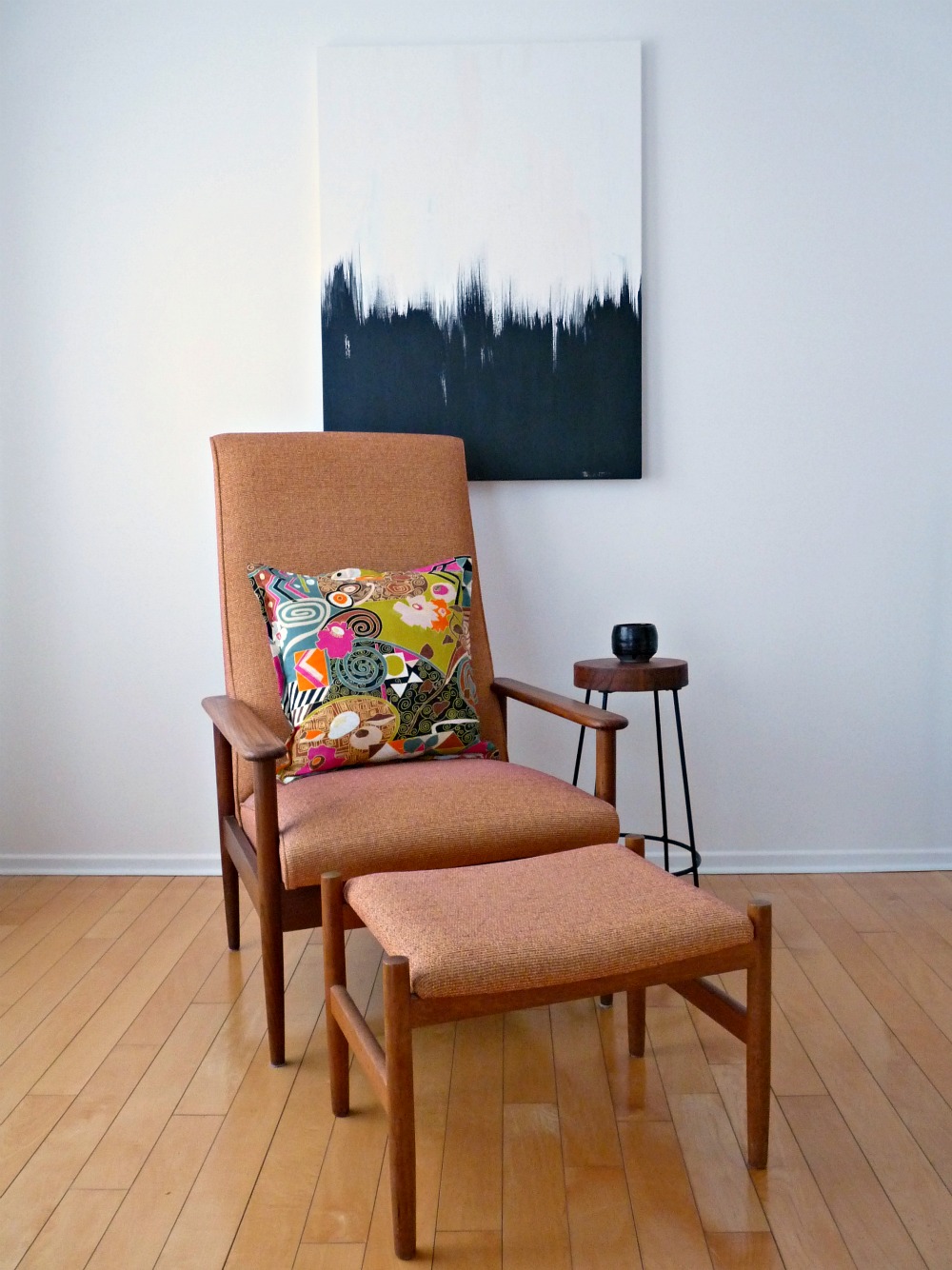




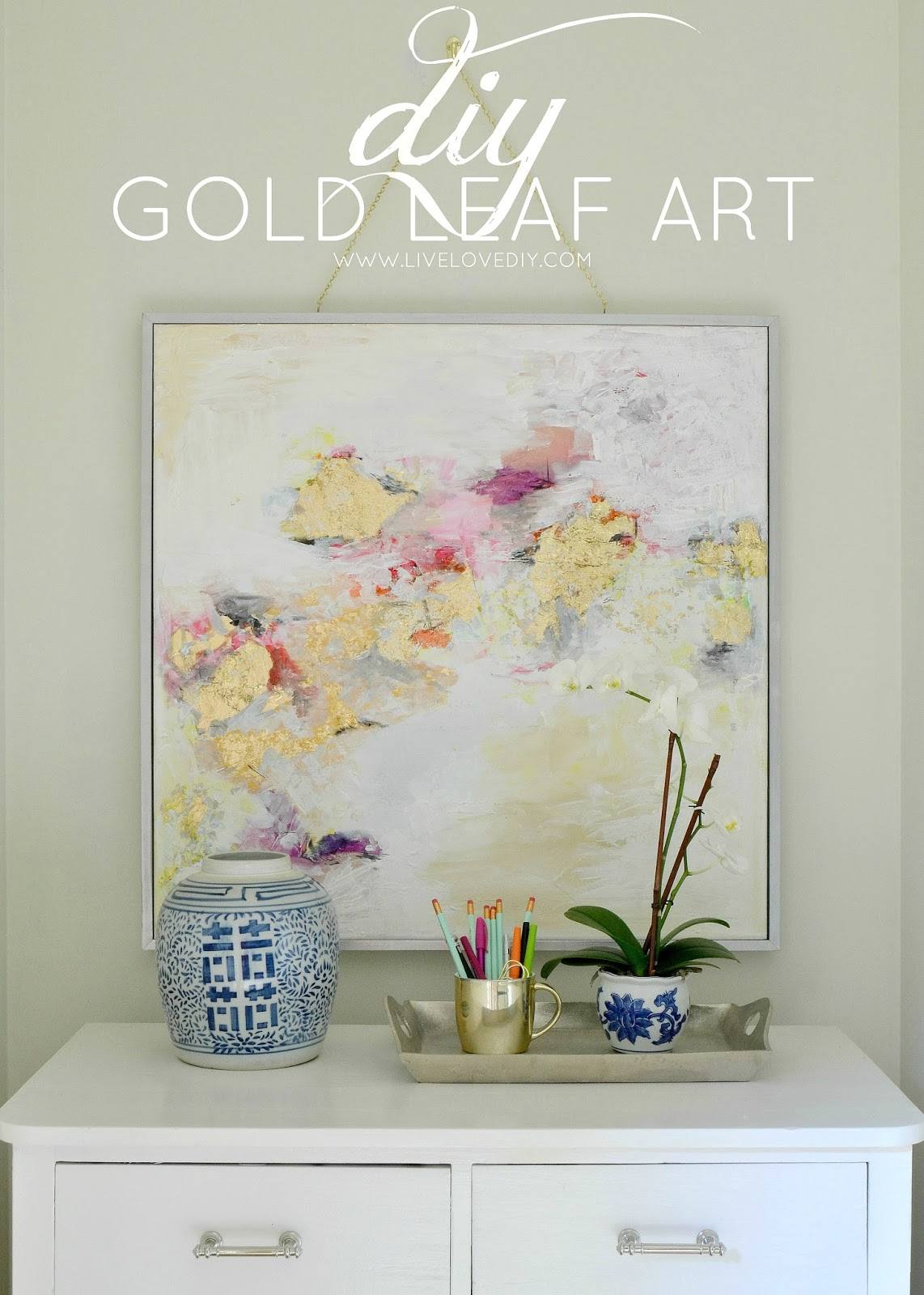




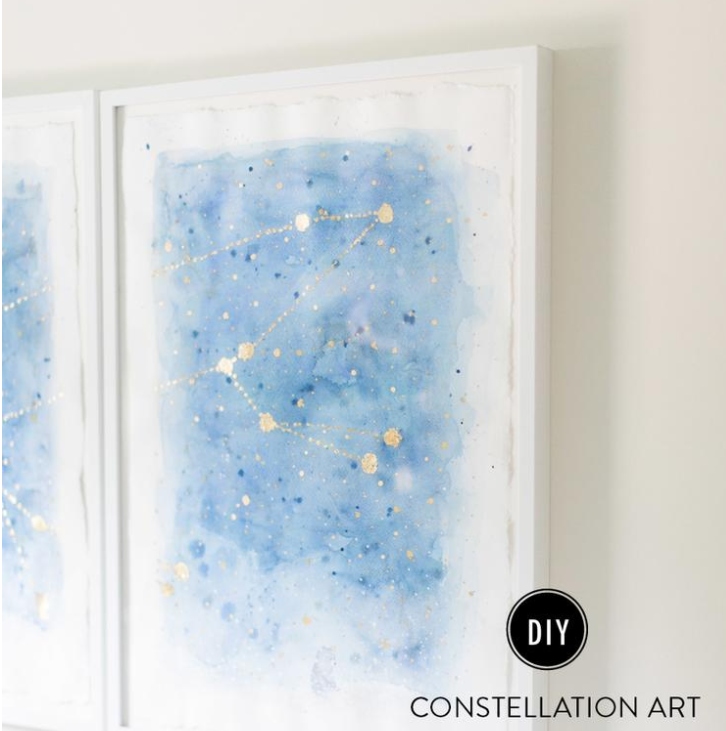


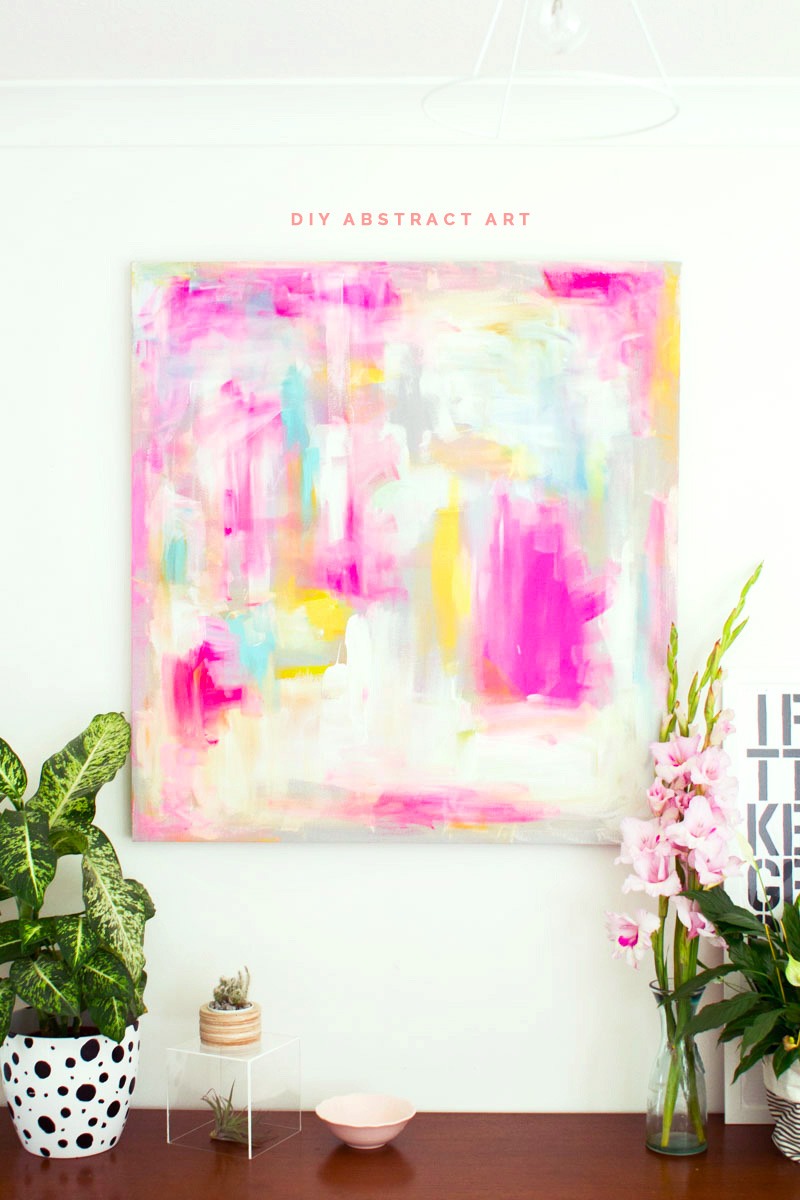








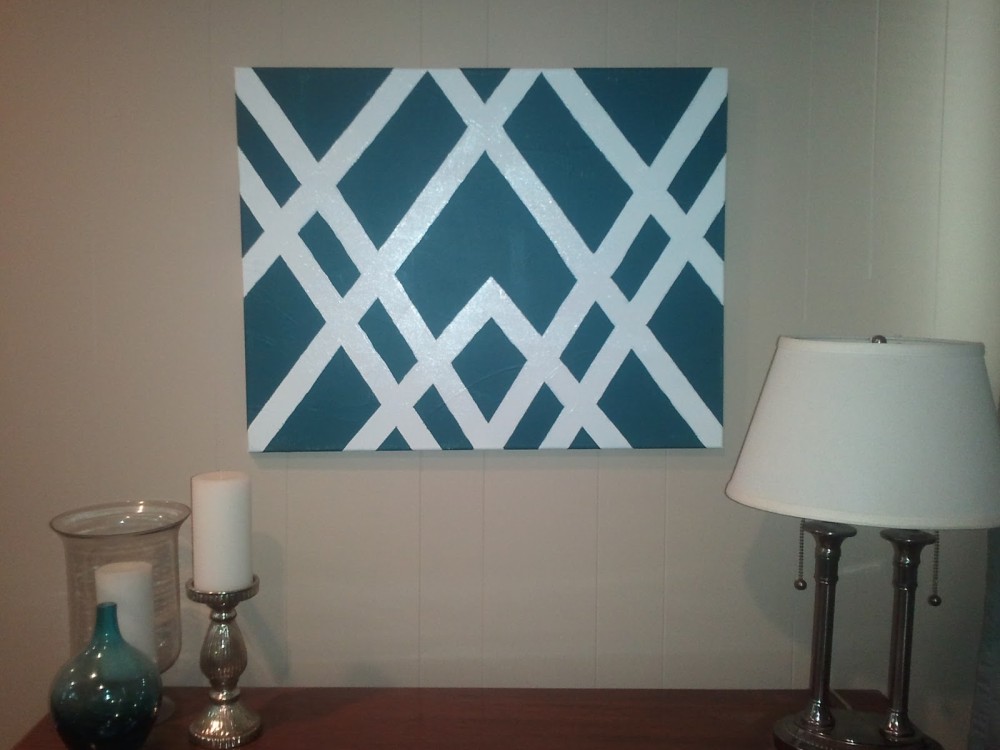




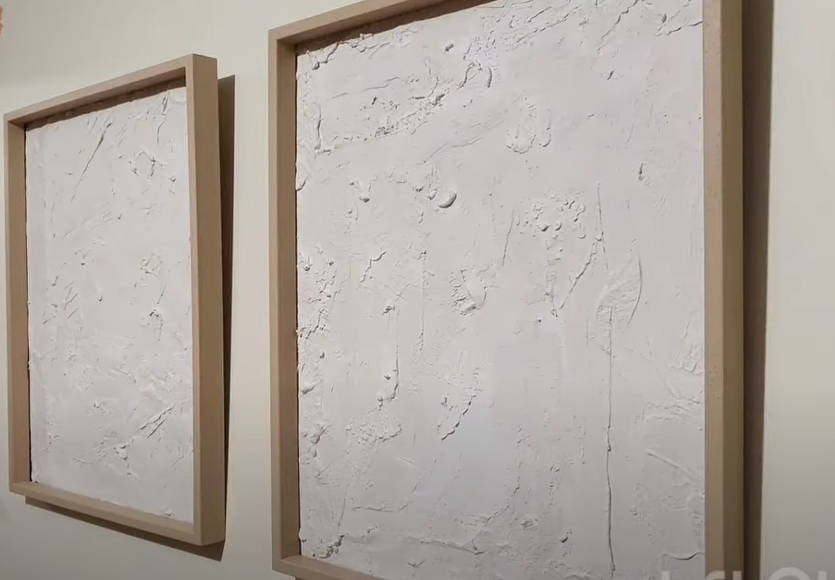



0 Commentaires